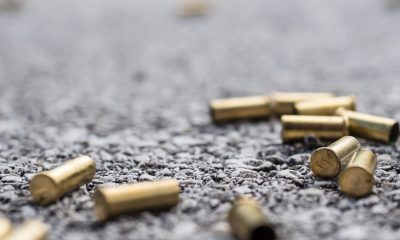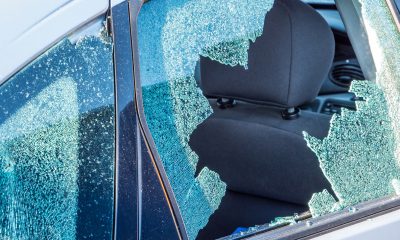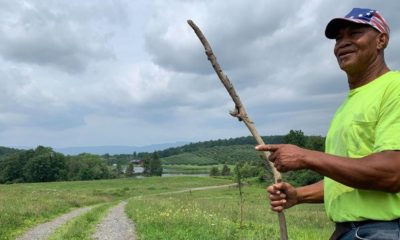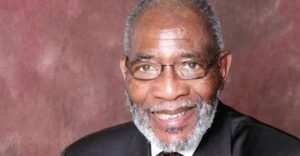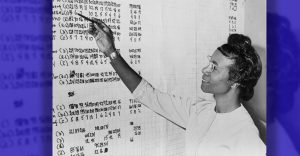Louisiana Weekly
Black police chiefs come under sharp criticism
LOUISIANA WEEKLY — Black police superintendents in two of California’s largest cities have come under intense criticism for their officers’ handling of two high-profile incidents.
By The Louisiana Weekly
Black police superintendents in two of California’s largest cities have come under intense criticism for their officers’ handling of two high-profile incidents.
San Francisco Police Chief Bill Scott recently defended his officers’ raid on the home of a freelance videographer who was suspected of stealing a police report concerning the death of public defender and San Francisco mayoral candidate Jeffrey Gordon Adachi. He was found dead of a drug overdose February 22 in his Telegraph Hill apartment.
Police critics charge the cops carried out a legally questionable raid May 10 at the home of Bryan Carmody, but Chief Scott defended the officers’ actions, arguing they executed search warrants issued against Carmody.
Scott argued Carmody exceeded his role as a journalist when he obtained and sold a police report concerning Adachi’s death. Carmody admits he sold the story of Adachi’s death to numerous news outlets, but he said he did not buy the report, according to various news reports.
The San Francisco PD has come under criticism for obtaining the search warrants, which is a possible violation of state and federal laws protecting journalists from having search warrants issued against them.
Scott declined to disclose the evidence against Carmody, who the San Francisco DA charged with being involved in a criminal conspiracy. Two judges had to approve the warrant.
In Sacramento, police have come under intense criticism for their arrest of a 12-year-old Black boy who was handcuffed and slammed face first to ground where he was then restrained by several cops.
The boy is 4’ 8” tall and weighs 80 pounds. Police also applied a spit mask over his face to prevent him from spitting at the cops after he allegedly threatened to spit on them.
A security guard at Walgreens charged that the boy was trespassing because he was asking shoppers to buy undisclosed items from him. Police arrested the boy on April 28.
Police said they are reviewing the child’s arrest. Police later released him to his mother. Daniel Hahn is chief of the Sacramento Police Department.
In March, Sacramento police shot to death an unarmed Stephon Clark.
This article originally appeared in the Louisiana Weekly.
#NNPA BlackPress
Bahamians in New Orleans support island recovery
LOUISIANA WEEKLY — In the aftermath of Hurricane Dorian, a group of New Orleanians with Bahamian roots has organized a donation drive to provide aid to the Bahamas. The local association, which calls itself the Bahamian-New Orleans Connection (BNOC), plans to direct the money it raises to the Ranfurly Homes for Children and the Bahamas Crisis Centre, two organizations dedicated, respectively, to supporting children and families displaced by the Category 5 storm, which devastated the northernmost islands of the Bahamas in early September.
By Nicholas Hamburger
In the aftermath of Hurricane Dorian, a group of New Orleanians with Bahamian roots has organized a donation drive to provide aid to the Bahamas. The local association, which calls itself the Bahamian-New Orleans Connection (BNOC), plans to direct the money it raises to the Ranfurly Homes for Children and the Bahamas Crisis Centre, two organizations dedicated, respectively, to supporting children and families displaced by the Category 5 storm, which devastated the northernmost islands of the Bahamas in early September.
In addition to monetary donations, BNOC is collecting supplies such as non-perishable food, clothes and toiletries at Solid Rock Missionary Baptist Church, located at 2120 North Roman St., in the hopes of filling a large container and shipping it to the Bahamas at the end of the month. Solid Rock will be open to receive donations from 9 a.m. to 3 p.m. on October 15, October 17 and October 19.
As an archipelagic country positioned on the fringe of the West Indies, the Bahamas is no stranger to hurricanes, but it has never confronted a natural disaster of Dorian’s scale. Indeed, after making landfall with record-tying winds, Dorian stalled over the Abaco Islands and Grand Bahama Island, inundating the northern part of the country for days. Sixty-one people have been confirmed dead and hundreds are missing; meanwhile, roughly half the population of Great Abaco Island remains displaced, and approximately 45 percent of the homes on Grand Bahama have been severely damaged or rendered uninhabitable.
According to members of BNOC, New Orleans could serve as a model of reconstruction for the Bahamas.
“As Bahamians who lived through the experience of Katrina, we have a vast knowledge to pass on to the Bahamian people,” said Dario Carey, the pastor of Solid Rock who came to New Orleans from the Bahamas in 1998. “It’s our job to provide Bahamians a map to navigate through these turbulent times.”
Formed last winter, BNOC consists of over a dozen Bahamians, all of whom immigrated to New Orleans within the past forty years. Before Dorian battered part of the archipelago, the primary purpose of the group was to unite the small number of people who live in New Orleans and hail from the Bahamas, a dual geography bridged by a notable cultural kinship.
“We look at New Orleans as an extension of the islands because the culture is very similar,” explained Alexina Medley, the former principal of Warren Easton High School and a native of Nassau, the capital of the Bahamas. “For example, New Orleanians call it gumbo, we call it soup. They say jambalaya, we say peas and rice. They do couvillion, we do steamed fish on the stove.” Carey chimed in: “They call it Mardi Gras; we call it junkanoo.”
Economically, New Orleans and the Bahamas resemble each other as well, with tourism functioning as a crucial industry in both places. While Dorian has damaged the tourist capital of the country, Grand Bahama, Medley issued a piece of advice to holiday-makers reconsidering their upcoming visit to the country: “The Bahamas is not one big island; it’s a chain of islands. Don’t disregard the Bahamas because you feel as though it has been completely affected, when, in fact, the storm only hit two islands.”
Still, Dorian has left thousands of Bahamians without homes or jobs, the type of circumstances that often prompt migration. Given its proximity to the Bahamas, and its status as the country with the second-largest Bahamian population, the United States would be a fitting destination for Bahamian evacuees, but President Trump recently denied Temporary Protected Status to Bahamians seeking refuge in the U.S., breaking from American precedent.
Carey, however, does not envision a mass exodus from Grand Bahama or the Abacos.
“They’ll come to Florida to do some shopping,” he said, “and then they’ll be back in the Bahamas.” Medley concurred: “Bahamians are very proud, and they don’t travel far from home. If they come, I don’t see them staying, not in large numbers.”
In this way, Medley pointed out, Bahamians will likely also approximate New Orleanians, who largely returned to the city after being uprooted by Katrina in 2005. That year, and in the years that followed, Bahamians in Nassau raised a noteworthy amount of funds to assist recovery efforts in New Orleans. With the northern part of the Bahamas currently in need of aid, BNOC intends to reciprocate the generosity, nearly fifteen years later.
To donate directly to the Ranfurly Homes, visit www.ranfurlyhome.org, click “Support Ranfurly,” then click “Donate.” To donate directly to the Bahamas Crisis Centre, visit www.bahamascrisiscentre.org and click “Donate.” For more information on the Bahamian-New Orleans Connection relief effort, contact Dario Carey at (504) 342-8373.
This article originally published in the October 14, 2019 print edition of The Louisiana Weekly newspaper.
This article originally appeared in The Louisiana Weekly.
#NNPA BlackPress
Veterans take art therapy to heal PTSD
LOUISIANA WEEKLY — Participants at a day-long gathering last week that focused on ways artistic endeavors might offer needed therapy for troubled military veterans said such art programs could especially help veterans of color. However, at the Louisiana Military and Veterans Arts and Humanities Summit that was held Oct. 8 at the New Orleans Jazz Museum, speakers, military officials and citizens concerned for the welfare of veterans, those involved in the day-long summit, said that negative stigmas might pose particular challenges for Black, Latino, Asian and other minorities working through battle trauma and other psychological disorders.
By Ryan Whirty
Participants at a day-long gathering last week that focused on ways artistic endeavors might offer needed therapy for troubled military veterans said such art programs could especially help veterans of color.
However, at the Louisiana Military and Veterans Arts and Humanities Summit that was held Oct. 8 at the New Orleans Jazz Museum, speakers, military officials and citizens concerned for the welfare of veterans, those involved in the day-long summit, said that negative stigmas might pose particular challenges for Black, Latino, Asian and other minorities working through battle trauma and other psychological disorders.
“African Americans going through the healing process need to understand the value of the art,” said Nolen Bivens, a retired Army brigadier general and now president of Leader Six, a management and consulting firm involved with veterans programs.
“Art can give them the means to self-help,” he added, “that [art] can be natural to them, without a stigma.”
Attendees said that many veterans of color might view enthusiasm for the arts and humanities as a weakness or as something that’s foreign or unusual. But on the other hand, civilians and the general public might doubt the potential healing effects of art therapy for veterans, including those of color, said Xiaobin Tuo, an active-duty lieutenant in the Coast Guard.
Tuo said that mutual stigmatization and perceptual schism between the public and veterans needs to be bridged in order for veterans who have post traumatic stress disorder or other psychological and emotional scars from their service.
“How do you connect the public and veterans?” Tuo posed. “People have to get past their conceptions [of art therapy], and it does start with building those bridges.”
While those challenges remain to be conquered, one general theme of the summit last week was that Louisiana, and New Orleans in particular, has always been a melting pot of culture and individual expression. Whether it’s by making music, painting murals or creating sculptures, the culture-rich city is a natural fit for art therapy programs for veterans.
Army veterans Ray Facundo, who gave a performance and testimonial at the gathering last week, said the summit will hopefully start a discussion about the benefits, funding and implementation of art therapy programs for veterans and even soldiers and officers still serving.
“Art is important,” Facundo said. “It’s not for everyone, but it is for folks who have something to say, whether they know it or not. Without this expression, there might be less opportunities to heal and to create a dialogue.”
Alejandra Juan, communications director and women veterans outreach coordinator for the Louisiana Department of Veterans Affairs, said later in the week that art therapy and art instruction can help bring service members closer to the people they protect.
“When a veteran can participate in the visual, musical and performing arts in his or her community, not only is this a step forward in that veteran’s journey back home, but that community gets to know our veterans personally,” Juan said.
“The arts afford all of our veterans – no matter their race, creed or branch of service – a place to tell their story, sing their song, paint their picture so that we here at home never forget what our veterans mean to our country – not only on the battlefield, but in what each veteran contributes when he or she comes back home,” Juan added.
Last week’s summit was organized by the office or Lt. Gov. Billy Nungesser, with involvement from the Louisiana Department of Veterans Affairs; the Louisiana Division of the Arts; the Louisiana Endowment for the Humanities; Americans for the Arts; and several other organizations.
Featured speakers and moderators included Bivens; Air National Guard Brig. Gen. Mike Cushman; Alejandra Juan, retired Air National Guard officer and the communications director for the LDVA; Marete Wester, senior director of Arts, Policy, National Initiative for Arts & Health Across the Military and Creative Forces Military Healing Arts Network, Americans for the Arts; and Louisiana Endowment for the Humanities president and executive director Miranda Restovic.
Other highlights of the summit included a discussion, “National and State Perspectives: State of the Arts and Humanities across the Military Continuum,” a breakout session in which smaller groups brainstormed ways to enhance and promote arts therapy programs for veterans; and a musical and visual-art performance by David St. Roman, Doug Gay and Sarah Burke, members of the Veterans Songwriting Workshop and Songs of Survivors. Song of Survivors is a long-running, popular effort dedicated to creating and making music by veterans.
This article originally published in the October 14, 2019 print edition of The Louisiana Weekly newspaper.
This article originally appeared in The Louisiana Weekly.
#NNPA BlackPress
New visual book relives life and commerce along the Mississippi River
LOUISIANA WEEKLY — The murky, muddy waters of the Mississippi River go on for miles and can be seen treading beneath the many boats and barges that slowly crawl along the river, daily.
Award-winning photographer Richard Sexton spent two decades observing and documenting the river, its industrialization and how it continues to evolve as time goes. This project began as a sponsorship for a portfolio of industrial landscape but later turned into something more.
By Sydney Odom
The murky, muddy waters of the Mississippi River go on for miles and can be seen treading beneath the many boats and barges that slowly crawl along the river, daily.
Award-winning photographer Richard Sexton spent two decades observing and documenting the river, its industrialization and how it continues to evolve as time goes. This project began as a sponsorship for a portfolio of industrial landscape but later turned into something more.
On Sept. 17, the Historic New Orleans Collection (HNOC), a museum and research institute dedicated to the study and preservation of the history and culture of New Orleans, released “Enigmatic Stream: Industrial Landscapes of the Lower Mississippi River,” a book chronicling the impact of industrialization between and along the Mississippi River’s banks over the past 20 years.
“New Orleans is here because of the river. I wanted to showcase that and let people decide what they think about it,” Sexton said.
The book features 100 black-and-white photographs showcasing the changes on and along the river’s bank, as well as how it has been integrated in everyday life. To accompany the release of the book, an exhibit of the images is on display at the HNOC’s exhibition center at 520 Royal St. until April 5, 2020. The exhibit uses some of the photos to highlight the development of the landscape. Both the exhibit and book contextualize the obvious but also complex uses of the Mississippi River.
The photos are organized geographically in the exhibit, starting in St. Bernard Parish and ending in Baton Rouge Parish. The section of the river from Baton Rouge to New Orleans is one of the most economically dominant passages in the country.
“New Orleans is still a prominent city because of the economic development of the river,” Sexton said. The photos bring the river to the forefront and help spark aesthetic and critical discussions about life in the city. They raise debates on issues such as global warming and how industrialization has and is affecting the land and communities around it.
“The exhibit speaks to the changing relationship between humans and the landscape of the lower Mississippi over the last decades,” said Siobhan McKiernan, an associate editor for The Historic New Orleans Collection. The Collection felt it was necessary to display Sexton’s work because of the impact that it could have on understanding the community. The photos speak to the dramatic changes that cannot always be seen by just gazing at the river, McKiernan explained.
New Orleans is a port-city with tons of goods in transit every day. Large corporations take advantage of the easy access that the Mississippi River provides but do not consider the environmental cost that the locals may have to pay, McKiernan explained.
Sexton’s work portrays this through photography of the residential areas along the water. They highlight the growing erosion and depreciation of the land. The images are annotated with essays from author Paul Schneider, who has produced books on natural history, and John H. Lawrence, who contextualized Sexton’s images.
“A lot of people aren’t aware of the history of the river in Louisiana,” said Jenny Bagert, a resident who attended the exhibit launch on Sept. 17. The exhibit along with the book display the current history of the Mississippi River, one that is rarely shown to the public. Bagert added that she felt the images clearly show the evolution of southeastern Louisiana that residents do not normally get to see.
While many public conversations surround changes to the city’s more touristic parts, residents who attended the exhibit launch said there is a need for more documentation that reflects social and environmental changes that impact ordinary residents. Presenting Sexton’s photos in the Historic New Orleans Collection provided them a place for a conversation about the environment that is playing out in activism and policy making, particularly during disasters.
The exhibition and book not only seek to present information but also inspire change, residents said. “This has really been a wakeup call for me,” Bagert said.
“Enigmatic Stream” is available for purchase at The Shop at The Collection. Admission to the exhibition is free. Both the museum and the shop are open to the public Tuesday-Saturday from 9:30 a.m. to 4:30 p.m. and Sunday from 10:30 a.m. to 4:30 p.m. More information about the book, exhibit and HNOC online at www.hnoc.org.
This article originally published in the October 14, 2019 print edition of The Louisiana Weekly newspaper.
This article originally appeared in The Louisiana Weekly.
-

 Activism4 weeks ago
Activism4 weeks agoOakland Post: Week of November 12 – 18, 2025
-

 Activism3 weeks ago
Activism3 weeks agoIN MEMORIAM: William ‘Bill’ Patterson, 94
-

 Activism4 weeks ago
Activism4 weeks agoHow Charles R. Drew University Navigated More Than $20 Million in Fed Cuts – Still Prioritizing Students and Community Health
-

 Bay Area4 weeks ago
Bay Area4 weeks agoNo Justice in the Justice System
-

 #NNPA BlackPress3 weeks ago
#NNPA BlackPress3 weeks agoLewis Hamilton set to start LAST in Saturday Night’s Las Vegas Grand Prix
-

 #NNPA BlackPress3 weeks ago
#NNPA BlackPress3 weeks agoBeyoncé and Jay-Z make rare public appearance with Lewis Hamilton at Las Vegas Grand Prix
-

 Activism2 weeks ago
Activism2 weeks agoOakland Post: Week of November 19 – 25, 2025
-

 #NNPA BlackPress4 weeks ago
#NNPA BlackPress4 weeks agoThe Perfumed Hand of Hypocrisy: Trump Hosted Former Terror Suspect While America Condemns a Muslim Mayor


